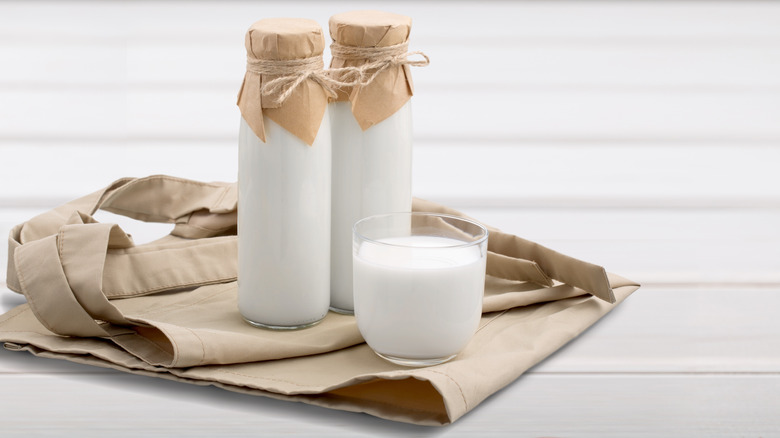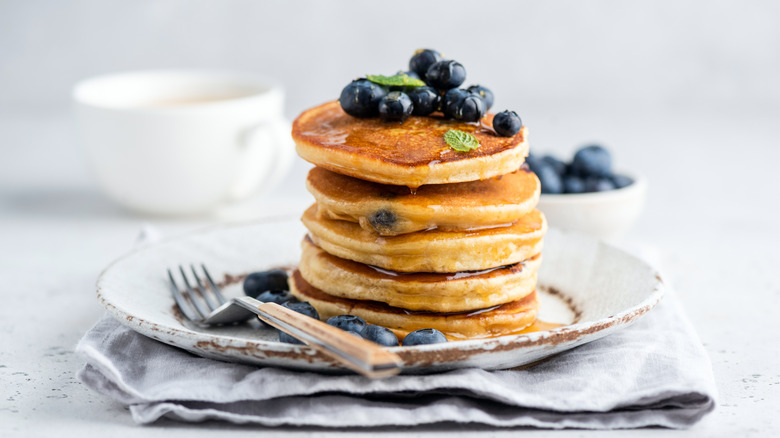The 2-Ingredient Buttermilk Replacement You Should Know
Rich, creamy, and tangy buttermilk can bring added dimension to your pancake stack, breakfast waffles, or blueberry muffins. And let's not forget the magic it works on sizzling fried chicken and fluffy golden biscuits. Without buttermilk, we wouldn't have the luscious crimson sponge in red velvet cake, which is caused by an alchemical relationship between buttermilk and cocoa powder. It can also make baked goods moist, tender, and silky smooth, while giving them more body. Plus, its acidity activates baking soda, helping your bread to rise.
But what exactly is buttermilk? There's actually more than one answer to that. Traditionally, it is a by-product of making butter, caused when you churn cream until the fat solids separate from the liquid. Not wanting to waste this leftover element, many incorporated it into cooking and baking. This original product is now known as sweet cream buttermilk to differentiate it from the other kind of buttermilk that you'll find in grocery stores. Essentially, the latter is a fermented dairy product manufactured by combining milk with active bacteria cultures, then leaving it to ferment.
Hopefully, a handy tub of buttermilk can be found in your fridge at all times. But what if you're in the middle of baking red velvet cupcakes and realize you've run out? Thankfully, you won't need a vintage butter churner to solve the crisis.
Why making your own buttermilk is surprisingly simple
There is a ridiculously simple way to create your own delicious buttermilk at home. All you need are two ingredients: milk and vinegar. Specifically, whole milk and white distilled vinegar.
You'll want to add one tablespoon of vinegar to one cup of whole milk, then leave it to sit for five to 10 minutes to let it thicken. However, don't expect it to be as thick as store-bought buttermilk, as it probably won't reach that consistency. Also, if the mixture looks lumpy or curdled, that's totally normal and the unevenness will disappear during cooking. But what if you don't have vinegar? No worries, you can replace it with freshly squeezed lemon to the same ratio — one tablespoon of lemon juice to one cup of milk. And if you don't have either vinegar or lemon juice? All is still not lost, as there are various buttermilk substitutes out there. Depending on the recipe, you could use yoghurt, kefir, sour cream, crème fraîche, or apple sauce. And if you're making bread, cream of tartar can activate baking soda in the same way that buttermilk does.
Now all you have to do is find a tasty biscuit recipe.

